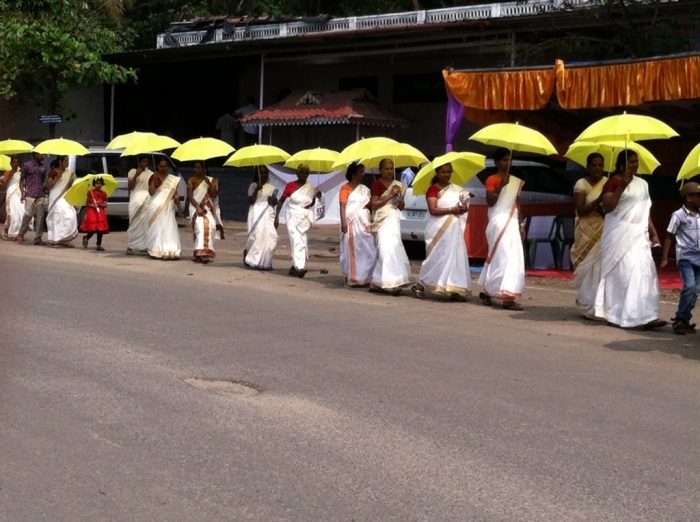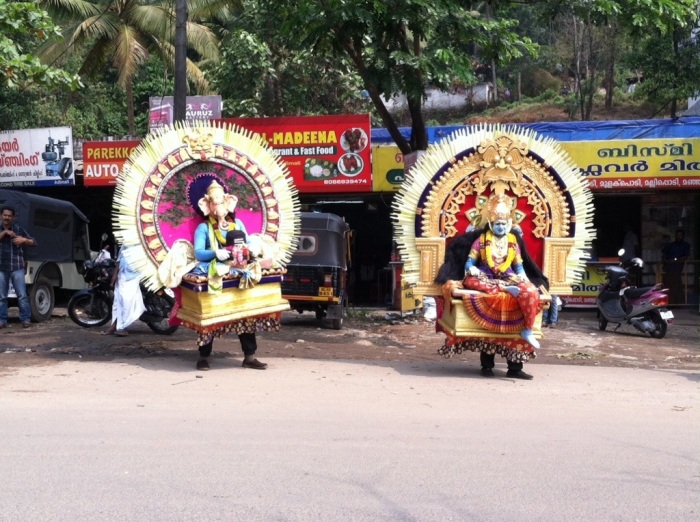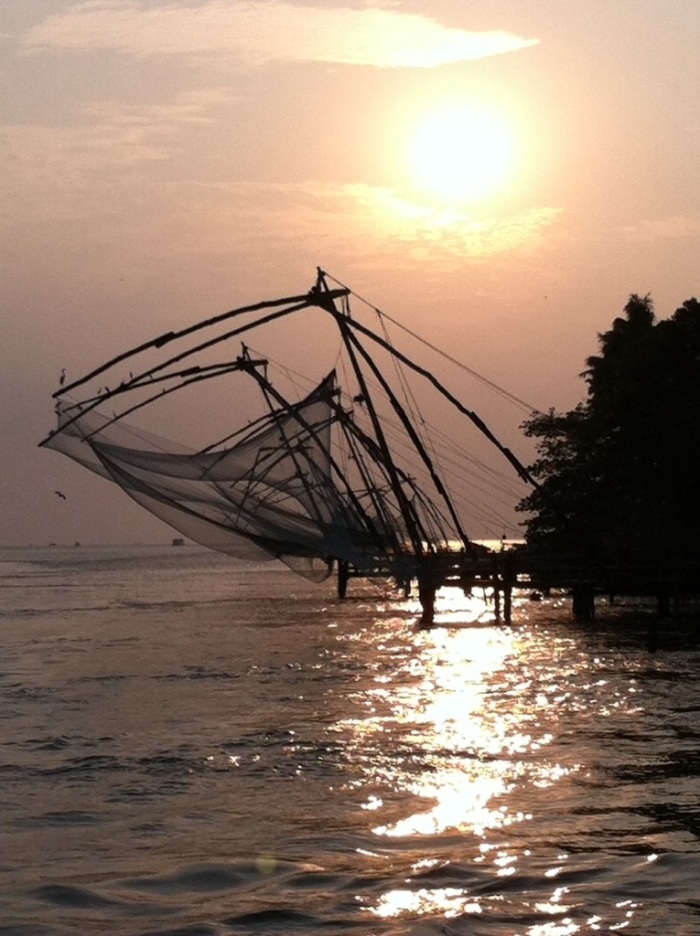Descending from the cool, misty hills near Munnar the heat and humidity rose once more, this time to a whole new level of you’re-sweaty-5-minutes-after-getting-out-of-the-shower. Air conditioning became more necessity than luxury and realizing this, all of our hotels and restaurants advertised their degree of elegance by being even colder than the others. Our days became an awkward dance of going inside feeling refreshing for a few minutes and then arctic and then going back out feeling comfortably warm for a few minutes and then sweltering.
But the oppressive heat and humidity seemed to suit the culture as we moved farther south. The pace became increasingly relaxed, the people’s complexions darker and their smiles even wider. Colorful, comfortable homes in shades of cerulean, lavender and wheat whizzed by as our mini-bus bumped along the chaotic Indian roads, to which we’d nearly become accustomed. Roadside shops with large sometimes nonsensical English signs seemed normal now as did families of four on motorbikes riding the shoulder.
But then we were confronted with an entirely new sight. Before us, a long, twisting line of men, women and children wearing bright white and gold saris and dhotis and caring identical bright citron yellow umbrellas snaked along the roadside. We quickly climbed out of the bus and walked along beside them, curious. The line was broken by dancers in elaborate costumes depicting favorite patron gods and goddesses, twirling and swaying to the beat of lines of drummers. A troops of bare-chested young men danced in a frenzy behind the drummers followed by men shouldering wooden harnesses supporting towers of colorful, swaying, fluted flower-like decorations interspersed with silver lamé flags. At the end of the procession, a small idol taken from the local temple for a day of mingling with his constituents was housed in a cart draped with vibrant orange fabric and decorated with streamers and flower garlands. We were still hours from the day’s destination of Cochin but it was clear the highlight of the day had already been accomplished.
I have to confess I found Cochin a bit of a let down. After so many encounters with what felt like the real, unvarnished India, Cochin felt a bit like a theme park. Tourists thronged the main streets and touts thronged the tourists. Shops selling souveniers just as likely from Rajasthan or Kashmir as the south vied for space surrounding all the main sites. I certainly understood the historical and commercial importance of the seaport town and gained new understanding of the tenacity or maybe stupidity of the British who clung to their traditional style of dress in Cochin’s climate, but even a perfect money-shot off the harbor’s iconic Chinese fishing nets failed to endear me to the city. Even knowing we’d be leaving luxury behind for a couple of nights, I couldn’t wait to reach our next village and return to the dusty, chaotic embrace of the India I was beginning to unabashedly love.
© Jennifer Raines, 2014-2015



Keep it coming Jenn … “unabashedly falling in love with rural India”….wow…didn’t see that coming. What is it: the color, the food, the simple religious ways of the farmers, or the dust and chaos of life finding ways to rise above it all, and the participants loving the results and living life free from discontent (if this is, in fact, what happens)? Jay
Ultimately, it’s all of what you mentioned. Perhaps especially the chaos. I’m still trying to find words to describe it… will try to do so in my final post, which I’m polishing up now…